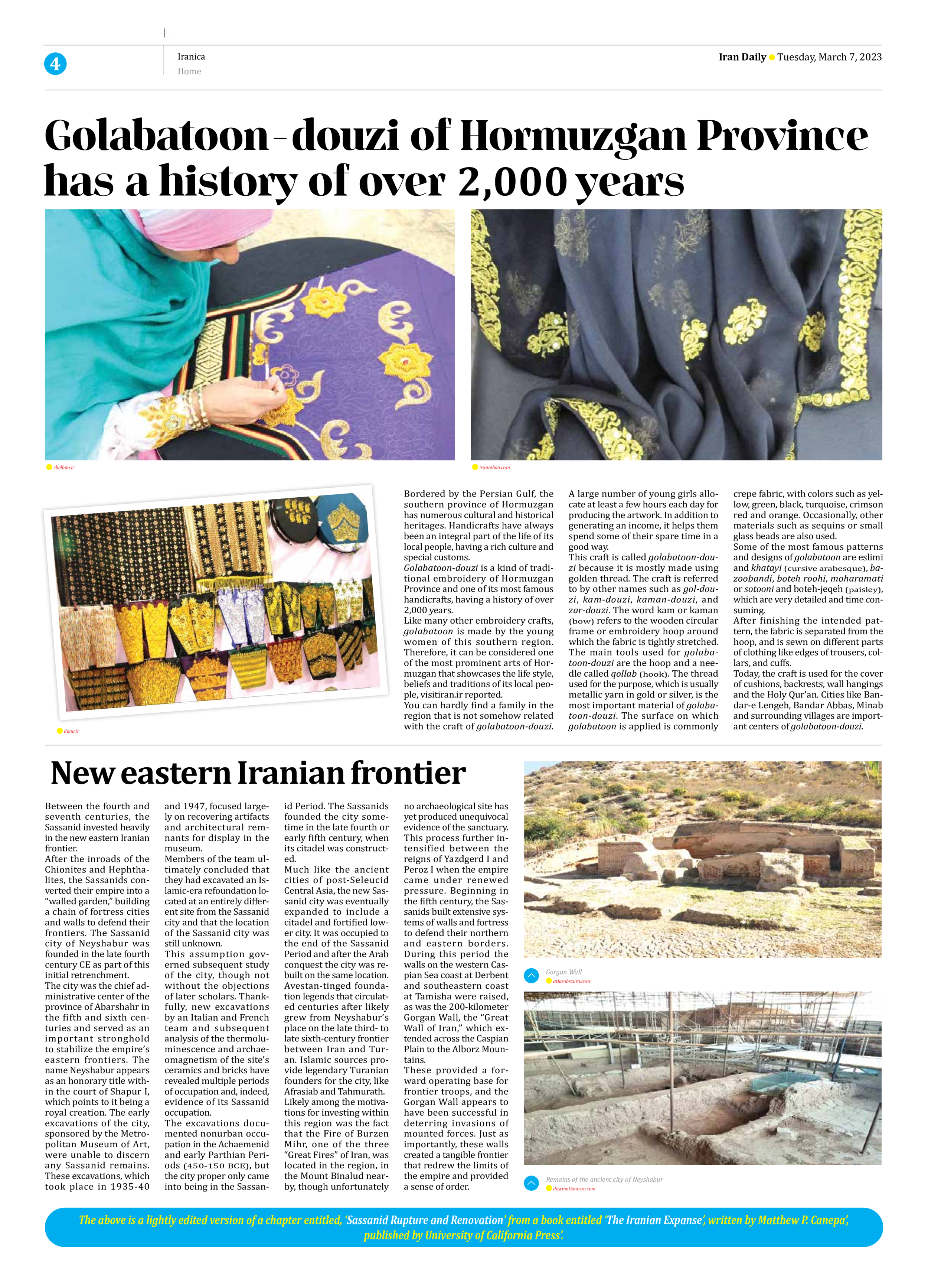
New eastern Iranian frontier
Between the fourth and seventh centuries, the Sassanid invested heavily in the new eastern Iranian frontier.
After the inroads of the Chionites and Hephthalites, the Sassanids converted their empire into a “walled garden,” building a chain of fortress cities and walls to defend their frontiers. The Sassanid city of Neyshabur was founded in the late fourth century CE as part of this initial retrenchment.
The city was the chief administrative center of the province of Abarshahr in the fifth and sixth centuries and served as an important stronghold to stabilize the empire’s eastern frontiers. The name Neyshabur appears as an honorary title within the court of Shapur I, which points to it being a royal creation. The early excavations of the city, sponsored by the Metropolitan Museum of Art, were unable to discern any Sassanid remains. These excavations, which took place in 1935-40 and 1947, focused largely on recovering artifacts and architectural remnants for display in the museum.
Members of the team ultimately concluded that they had excavated an Islamic-era refoundation located at an entirely different site from the Sassanid city and that the location of the Sassanid city was still unknown.
This assumption governed subsequent study of the city, though not without the objections of later scholars. Thankfully, new excavations by an Italian and French team and subsequent analysis of the thermoluminescence and archaeomagnetism of the site’s ceramics and bricks have revealed multiple periods of occupation and, indeed, evidence of its Sassanid occupation.
The excavations documented nonurban occupation in the Achaemenid and early Parthian Periods (450-150 BCE), but the city proper only came into being in the Sassanid Period. The Sassanids founded the city sometime in the late fourth or early fifth century, when its citadel was constructed.
Much like the ancient cities of post-Seleucid Central Asia, the new Sassanid city was eventually expanded to include a citadel and fortified lower city. It was occupied to the end of the Sassanid Period and after the Arab conquest the city was rebuilt on the same location.
Avestan-tinged foundation legends that circulated centuries after likely grew from Neyshabur’s place on the late third- to late sixth-century frontier between Iran and Turan. Islamic sources provide legendary Turanian founders for the city, like Afrasiab and Tahmurath.
Likely among the motivations for investing within this region was the fact that the Fire of Burzen Mihr, one of the three “Great Fires” of Iran, was located in the region, in the Mount Binalud nearby, though unfortunately no archaeological site has yet produced unequivocal evidence of the sanctuary.
This process further intensified between the reigns of Yazdgerd I and Peroz I when the empire came under renewed pressure. Beginning in the fifth century, the Sassanids built extensive systems of walls and fortress to defend their northern and eastern borders. During this period the walls on the western Caspian Sea coast at Derbent and southeastern coast at Tamisha were raised, as was the 200-kilometer Gorgan Wall, the “Great Wall of Iran,” which extended across the Caspian Plain to the Alborz Mountains.
These provided a forward operating base for frontier troops, and the Gorgan Wall appears to have been successful in deterring invasions of mounted forces. Just as importantly, these walls created a tangible frontier that redrew the limits of the empire and provided a sense of order.
The above is a lightly edited version of a chapter entitled, ‘Sassanid Rupture and Renovation’ from a book entitled ‘The Iranian Expanse’, written by Matthew P. Canepa’, published by University of California Press’.







